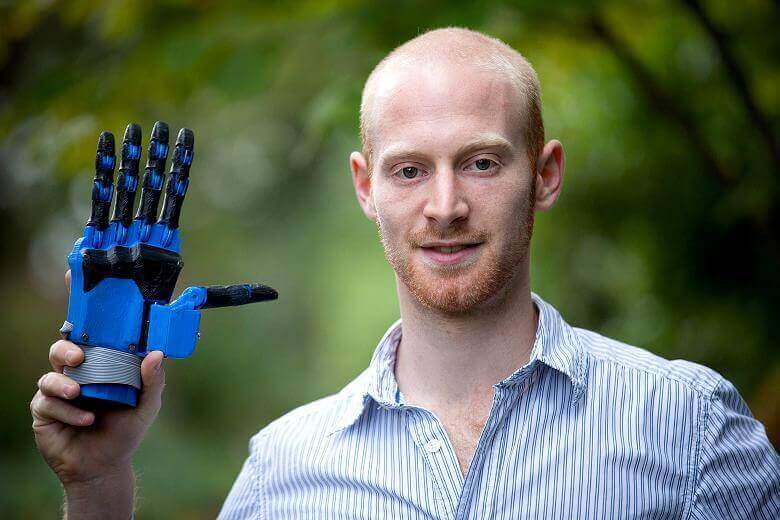Things are getting busy at the 3D printing show in London. Amidst the colourful, and quirky displays of 3D selfies, and printed plants there are some pretty revolutionary, and life-changing innovations.
It’s one thing to 3D print a neat, problem-solving gadget like the Pebble dock we wrote about here. How about a hand?! Ok, it’s not a fully functioning hand, yet, the team at Open Bionics are getting pretty close.
They are at the show as part of one of the feature zones. It’s called 3D Printshow Hospital, where the latest innovations in medical technology are being demonstrated. There are some pretty eye-opening things on the show, including cranial implants and stem cell printing, which literally involves printing cells.
That’s very much in development now, but progress in the field of prosthetics could make a huge difference to anyone who has suffered a tragic accident resulting in amputation in the very near future.
Open Bionics can print hands that fit patients perfectly

At the moment it costs between €50,000 – €150,000 for a prosthetic hand, and it takes up to 2 months to produce. That’s a huge price to pay, and a long time to wait. As the Open Bionics’ slogan says, “Prosthetics shouldn’t cost an arm and a leg”. Their CEO, Joel Gibbard, has this at the front of his mind, “We want to reduce the price of prosthetics down to €1,500 to €3,000, so they’re much more affordable, either privately or for the NHS.”
With increasing pressure on resources, Britain’s world-leading public healthcare service needs all the help it can get. It could certainly use a hand from Open Bionics.
The innovative company seems to buck the trend of ‘business as usual,’ and is looking to make its products as affordable as possible, but not at the expense of quality. “Using state of the art scanning technology we can print prosthetic hands that fit patients perfectly,” Joel explains. They have already had reports that their prototypes reduce friction and discomfort significantly for patients, even compared to top of the range solutions.
A prosthetic that can be printed overnight
So how do they manage to make it so much cheaper without reducing the quality? Well, although it’s not ready quite yet, by 3D printing the prosthetic they can print it overnight, so it dramatically cuts down the amount of work that needs to be done. That’s where a lot of the cost lies.
After that, it takes about an hour to fit the electrodes, which help move the fingers, and make the hand grip. It’s all connected to sensors that are placed on the forearm. These ‘read’ the muscle and tissue movements, which control the hand. They are still developing different movements to make the prosthetic as advanced as possible, but it’s another exciting example of how 3D printing is improving the production of complex solutions at the same time as making them quicker, cheaper, and eventually better.
If the moon landing was “One small step for man, a giant leap for mankind,” then this new 3D printed hand has got to be at least a high-five.
License: The text of "Hand printing by Open Bionics" by All3DP is licensed under a Creative Commons Attribution 4.0 International License.